- Home
- Thomas Keneally
Australians, Volume 3 Page 3
Australians, Volume 3 Read online
Page 3
After the war there were complaints about a new stridency and boldness in young women, all under the influence of new entertainments, including the ‘flicks’ and the rise of public dancing. Even during the war, older folk and the press were appalled by the open way young women and soldiers met and talked in city streets. Soldiers were warned that there were Australian factory girls in the streets of the Australian cities, and around Australian military headquarters in Horseferry Road, London, who were not professional prostitutes but ‘amateurs’, and who would infect soldiers with venereal diseases (VD) picked up from earlier transactions. Many authorities were sure that the spread of VD in Australian society was a result of factory girls and other girl employees being on the streets after work. One commentator declared that too many girls absorbed ‘the moral tone of the man of the world and regarded sexual satisfaction as a right’.
And it was not only working-class girls. After the war, the middle-class single girl, who might have got ideas from working in voluntary bodies or in offices, and who had got used to the freedom of not being chaperoned, was now possibly that latest of creatures, ‘a flapper’. The ‘flapper’, characterised by the arm-flapping motion of the dance named the Charleston, was an American creation, growing out of a background of prep schools and university where educated girls chose to consider themselves men’s equals, to drink like them, to smoke like them, to listen to jazz, and to display a blatant interest in flirtation and ‘petting’ (so asserting their own right to sexual pleasure). The flappers’ inchoate declaration of liberty was reflected in their fashions. They often went bare-headed and wore their hair bobbed, their foreheads circled by Red Indian–style headbands, their dresses above the knee and their stockings rolled down, the tops visible on their thighs as they danced. They even drove cars.
Factory girls adopted the style of the flapper to the extent that they could afford it. The manifestation was seen as decadent by feminists such as the remarkable Edith Cowan, the first woman member of any Australian Parliament, in her case in Western Australia in 1921. She had been fighting for society to take women seriously since the 1890s. The ‘flapper’ vulgarised women and was undermining what had been achieved, Edith Cowan believed.
Some could see benefits in the new woman, however, whoever she was. In Melbourne, the president of the Young Women’s Christian Association, Nell Martyn, a therapeutic masseuse who had worked on soldiers’ damaged limbs, had taken over her father’s Melbourne steelworks and run them with great success. She reported in 1924 that girls were no longer ‘fettered by traditions nor bound by conventionalities’. Martyn was a devout Methodist but knew women could not be brow-beaten out of what they were becoming: ‘How can we hope to give an abundant life [to young women] by a process of restriction and prohibition . . . our girls have a right to the opportunities for meeting, knowing and understanding men . . . a Christian Association will fail in its purpose if it does not provide for this side of a girl’s nature.’ Martyn was willing to condone dancing, generally condemned by non-conformists and by members of the Scottish Free Church.
Since the flapper reached Australia by way of the flicks, there was no country town that was not affected by the phenomenon. Not all young women were flappers anyhow, but they were in one way or another influenced by the expression of freedom for which flappers stood. A girl from the bush trying to imitate the worldliness of the flapper might lack the sophistication to carry it off. Many ordinary girls felt confused about where the boundaries of behaviour lay. Sometimes there were tragedies, and young women found the official world did not accept the new freedoms.
Molly Meadows, a twenty-two-year-old waitress who worked at the Bunbury Rose Hotel in Western Australia, was one who had seen the change in the behaviour of girls in Australian and American movies, and who clumsily tried to imitate the glib smartness of the new woman. In April 1922, Molly was sexually assaulted in the sand hills of the back beach of Bunbury. The young man accused of assaulting her was twenty-year-old circus employee Joseph McAuliffe from Perry Brothers’ Circus, then performing in Bunbury. As the press report said, ‘Her protests were unavailing’, and she ‘was treated in a most brutal fashion, a branch or root of tree being pressed across her neck’. A doctor later confirmed that she had been ‘outraged’. McAuliffe was a large young man and it had taken two policemen to hold him once bystanders heard Molly’s protests and calls for help. The matter of Molly Meadows would raise in Australia the new post-war, Jazz Age, Roaring Twenties question of whether a woman could behave with the new freedoms and still consider herself immune from assault.
Bunbury was a characteristic Australian coastal town, remote in terms of the day. It was five hours’ rail journey south of Perth and had a population of about four thousand. It supported, as did many towns that size then, two newspapers, as well as its own brewery, timber yards, butter factory, fish company, brickyard and tannery. The cinema was—like hundreds of others across the nation—named the Lyric.
One hundred and twenty-three Bunbury men had died during the Great War conflict, and many others had come home disabled. But on 11 November 1918, the day the Armistice was signed, as in so many other towns in Australia, the municipal band played from the balcony of the Rose Hotel and led a thousand people in the street in the singing of ‘Rule Britannia’, while children blew tin whistles and beat kerosene tins.
Despite the remoteness of Bunbury in the scheme of the world, since coming to town from her parents’ farm, Molly, like other girls at the time, must have seen the movies of Theda Bara, daughter of a Jewish immigrant to America from Poland. Bara was the original ‘vamp’ of the silver screen and her silent films have to this day an extraordinary voiceless eroticism. They were of great concern to civic leaders and clergymen when they appeared; even in Hollywood there was a feeling that she should be excluded to allow more virtuous-seeming female characters onto the screen. In her 1915 film A Fool There Was, Bara whispered the famed line ‘Kiss me, you fool!’, easily lip-read in the cinema dark by millions of young women. It was an utterance that lodged in the imaginations of women and men across the world. Bara’s other films to which the young flocked were the 1919 Siren’s Song and When Men Desire, robust titles in themselves. Besides Bara’s influence, through the newsreels, Molly had seen real-life flappers dancing the Charleston and the Black Bottom at the Palais de Danse in St Kilda.
Molly had been away from home for only three months when she first began working at the Rose Hotel. The circus arrived in mid-April 1922 and set up at Queen’s Gardens. Molly went to the circus with her friend and fellow waitress, Sybil Wickender. Wickender had met Mr Perry, the circus owner, and introduced him to Molly when the show ended. They met up with Joseph McAuliffe and the group of four left the circus tent. In the backyard of the hotel, Molly listened to McAuliffe’s tales of the circus and permitted mutual caresses. After circus rehearsal the next day, by previous arrangement, Perry and McAuliffe took the two girls strolling to the beach. McAuliffe and Molly dawdled behind and she suggested that they should sit down. That was when the assault was believed to have taken place.
Here was a situation in which a naïve country girl wanted to know what the much-touted process named ‘dating’ meant. It meant something more glamorous than ‘courting’. It was something new, something that broke away from bush greyness. She admitted that she had allowed McAuliffe to kiss her and—as she innocently confessed—had ‘playfully’ threatened that she would bite him. McAuliffe’s argument was the classic sexual assault defence that she had led him on. He said, ‘I thought this arrangement was as good as a promise.’ As he rolled her onto her stomach and pulled down her drawers, she screamed, and even when a surfer and two fishermen came running to intervene, McAuliffe was so certain of his right to conquest that, when he was dragged off her, he called out, ‘I’ll meet you on the corner tonight, Molly.’ The question was whether the judges would, in a new age, recognise Molly’s ‘modern’ right to flirt, and then still say no.
Just o
ne week after the attack, the trial of Joseph McAuliffe opened in the Bunbury Court of Quarter Sessions before three police magistrates. First was the question of whether carnal knowledge occurred; next, that of Molly’s consent. Molly gave her evidence. She said he had penetrated her twice: ‘My head was down and covered with weeds . . . I was half unconscious from struggling and fright.’
McAuliffe said it was Molly who’d suggested they sit down on the sand hills. She had opened her legs freely. ‘She was a consenting party up to the time I penetrated her.’ He had told the police, ‘I tried but whilst I was trying I shot my mutton . . . I could not stop, no man could then.’ Howard S. Bath, McAuliffe’s lawyer, must have hoped that McAuliffe’s statement about how he was unable to stop in mid-passion would mean something to male judges and jurors. Bath wanted to portray Molly—however unfairly—as a teasing, promiscuous young woman who went out at night unchaperoned. The Crown Prosecutor argued, however, that everything about the girl and her clothing indicated that she had fought to prove to McAuliffe that she had not given consent.
So were young women like ‘modern’ Molly Meadows entitled to set limits to their sexual adventures? It seemed as if a crucial issue of women’s rights depended on what the Bunbury magistrates decided. In previous similar cases, the girl’s flirtatiousness could be relied on to acquit a man. But Magistrate Wood said the jury was to make a legal distinction between ‘flirtation’ and ‘encouragement’. If Molly’s spooning in the shadows of the hotel backyard the night before the rape constituted the former, then McAuliffe was a rapist, but if there were encouragement, then McAuliffe was a man ‘legally’ entitled to sexual release.
The twelve men of the jury retired at 8 p.m. and came back after only seventeen minutes with a verdict of guilty. Magistrate Wood sentenced the prisoner to five years’ hard labour. McAuliffe, whose lawyer was astonished by this revolutionary verdict, spent the next months inside Western Australia’s notorious maximum security gaol, a surviving institution of the convict system in Fremantle.
But there was a great deal of male sympathy for McAuliffe. A fund was set up to finance his appeal, which was heard on 1 September 1922 before three judges of the Supreme Court of Western Australia. The Crown Prosecutor argued what the magistrates’ bench had decided: that women were entitled to call off an encounter when they wished. The defence pursued again the traditional line: women were either chaste, and hence any assault on them came without encouragement, or they were ‘tough girls who were open territory’, as Howard Bath the lawyer put it.
Chief Justice MacMillan opted without further legal analysis for the position of the defence. Justice Thomas Draper, a scholar, bird watcher and former attorney-general of Western Australia, who had lost his seat in 1921 to Edith Cowan, was also on the bench. He agreed with MacMillan. The third justice was Robert Bruce Burnside, son of the former chief justice of Ceylon and devout Swan River yachtsman, known to have a ‘rousing and sometimes earthy sense of humour’. Nonetheless, he too seemed shocked by the easy intimacies that Molly permitted soon after meeting McAuliffe, and by the fact that she had agreed to meet him the next day.
So a new trial was awarded McAuliffe. The case came up before a jury and the yachtsman bon vivant Justice Burnside in October 1922. It went swiftly—the witness testimony took up the first day, and the lawyers’ addresses and judge’s charge the next morning. Justice Burnside told the jury that if Joseph McAuliffe had extracted consent from Molly Meadows ‘by intimidation, by force, or by fraud’ there would be no justification for the sexual act. But there had been no necessity for McAuliffe to resort to such tactics. Burnside went to the length of saying he was deeply shocked by Molly’s ‘libidinous behaviour’ and suggested that such women had no right to claim a lack of consent: ‘For a young woman to be sitting in a backyard at midnight with a man whom she has met only a short time before, and kissing him; if that is innocence, then the word has changed its meaning.’
The jury came back two hours later to declare McAuliffe not guilty. What Burnside had decided was that the would-be flapper could not cry wolf without deserving to be devoured, and that the war had not changed the common law definition of rape. It was not yet safe to experiment, however tentatively, at being a new kind of woman and at the same time expect immunity from sexual assault.
MORE BUSINESS WITH ‘AVIATING’
To many, Billy Hughes’ post-war political career would seem erratic, with the meetings of Cabinet seeming strange, volatile affairs, and with the Country Party refusing to join him in government because of his apparent socialism in having his government buy into a Commonwealth Shipping Line, the Commonwealth Oil Refineries and Amalgamated Wireless. He would fall from office after the 1922 elections, the Country Party agreeing to give their weight to the Nationals only if the Melbourne businessman and Gallipoli hero (fighting with the Royal Fusiliers) Sir Stanley Melbourne Bruce took over the leadership.
But the volatile little Welshman had many flashes of prophetism and declared himself ‘a fanatic on aviating’. He saw—as would be proven to the cost of young Australians then a-growing and likely to reach maturity by the end of the Depression and in the following war—that ‘the air, that new element which man has now conquered, is but the sea in another form, and it is on the sea and in the air that we shall have to look for our defence’. But he saw too, accurately, that ‘no country afforded better scope for commercial purposes’ than Australia.
In 1924, two military flyers, Wing Commander Stanley Goble and Flying Officer Ivor McIntyre, made the first aerial circumnavigation of Australia, and civil aviators such as Charles Kingsford Smith were beginning to emerge. Kingsford Smith had embarked for Gallipoli in February 1915 as a member of a signal company, served during that doomed campaign, and then became a despatch rider in England and France before transferring to the Australian Flying Corps. Shot down and wounded in August 1917, he was awarded the Military Cross. He had been barred from participating in the 1919 England-to-Australia air race, won by his namesakes Keith and Ross Smith, because it was believed he lacked navigational experience, but after piloting joy flights in England, he went to the United States to attract sponsors for a trans-Pacific flight, and was briefly a stunt and joy-ride flyer in California. Back in Australia in January 1921, he made a living with another joy-riding organisation, the Diggers’ Aviation Company—a sign that, despite the missions he and others had flown in the Great War, society did not know whether flying was an enlargement of the world or merely a circus attraction.
Kingsford Smith acquired or leased Bristol Tourers and carried freight from Carnarvon in Western Australia to other remote towns. In 1927, with Charles Ulm, ardent and sportive flyer and fellow Gallipoli survivor, he founded the Interstate Flying Services, which tendered unsuccessfully for an Adelaide–Perth mail run. Even so, at least in Kingsford Smith’s case, he performed long-distance flights for their inherent excitement. The first Kingsford Smith and Ulm demonstration flight occurred in June 1927 when they circuited Australia in ten days and five hours. For a trans-Pacific flight they planned, the New South Wales government subscribed £9000, and Sidney Myer, the Melbourne emporium owner, and a Californian oil magnate named G. Allan Hancock matched it.
In a three-engine Fokker plane, the Southern Cross, with Ulm and two American crewmen, Harry Line and Jim Warner, Kingsford Smith took off from Oakland, California, on 31 May 1928, and flew via Hawaii and Suva to Brisbane in eighty-three and a half hours. Next they took on a non-stop flight from Point Cook in Melbourne to Perth, and then from Sydney to New Zealand to show the feasibility of passenger and mail services across the Tasman. Like Melbourne’s Smith brothers, he was knighted. But his repute was not unchallenged.
During a flight to England with Ulm in 1929 to place orders for planes, he made an emergency landing at the Glenelg River estuary in the Kimberley. Two aviators searching for him, Keith Anderson and Robert Hitchcock, crash-landed in Central Australia and died of thirst and exposure before they were found. The rumour circ
ulated that Kingsford Smith and Ulm had engineered the event so they could claim that while waiting for rescue they had drunk and been buoyed by Coffee Royal, a brand of coffee and brandy that had sponsored the flight.
But Kingsford Smith, above all other Australians, seemed the risky harbinger of a potential future for civil aviation. His airline, Australian National Airways, began operations in January 1930. The standard, scheduled flight did not satisfy his needs, however. The age of exploration had ended elsewhere on earth and at sea, but not in the air. Even so, it offered a narrow window of glory. The more accustomed air services became, then the less derring-do remained in aviation. In June that year, he piloted the Southern Cross on an east–west crossing of the Atlantic from Ireland to Newfoundland, and received an enthusiastic welcome in New York. He had many an entrepreneur’s fear of socialism, and had by now joined a not-so-secret, near-Fascist unofficial army, the New Guard. But the Depression drastically reduced the demand for air travel, and his airline came close to bankruptcy. One of its planes, the Southern Cloud, disappeared over the Australian Alps and would not be found until the 1950s.
In any case, Kingsford Smith was only partially an entrepreneur, since the entrepreneurial spirit is not always congenial to risk-taking. He was chronically restless and yearned for new challenges. It was the very nature of the aircraft that it covered very swiftly distances that would have taken classic ground-breakers like Lewis and Clark, Dr Livingston, and Burke and Wills years of peril and struggle. The risk of undertaking endeavours in the sky took place over days or even hours, and the available exploits to be entitled ‘the first man to’ were being grasped by a growing world of flyers. Glory, which had once lasted a lifetime, now lasted months. A fury to excel and be recognised drove Kingsford Smith, and all challenges were welcome, even as the Depression struck Australia. When in 1931 one of his planes had problems and was grounded in Malaya with a load of Christmas mail for Britain, he flew a replacement plane, and collected and delivered the mail in time. In October 1933, he flew solo in just over seven days from London to Wyndham, Western Australia, in a Percival Gull aircraft named Miss Southern Cross; the Commonwealth government awarded him £3000 for the achievement. In 1935, a trans-Tasman airmail service began, and on the first flight, aboard the Lady Southern Cross, one of the crewmen Bill Taylor had to climb out of the cockpit and transfer oil from the sump of a dead motor into the other. (This would be reproduced superbly in Ken Hall’s classic 1946 film, Smithy.) Most of the cargo was jettisoned and Kingsford Smith brought the Lady Southern Cross back to Sydney.

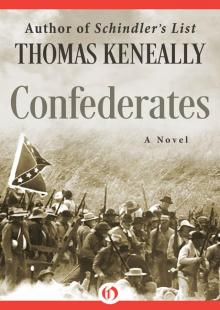 Confederates
Confederates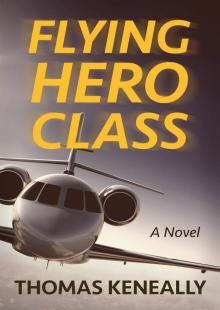 Flying Hero Class
Flying Hero Class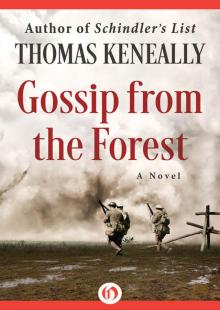 Gossip From the Forest
Gossip From the Forest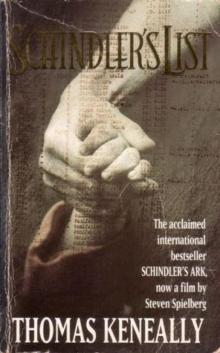 Schindler's List
Schindler's List Bring Larks and Heroes
Bring Larks and Heroes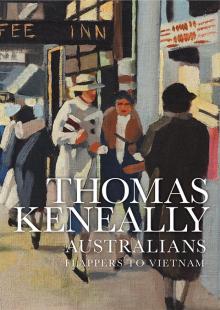 Australians: Flappers to Vietnam
Australians: Flappers to Vietnam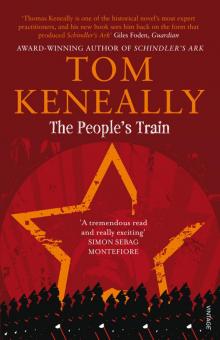 The People's Train
The People's Train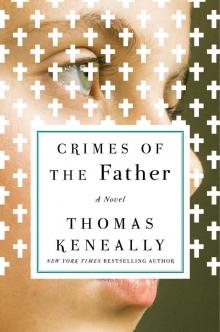 Crimes of the Father
Crimes of the Father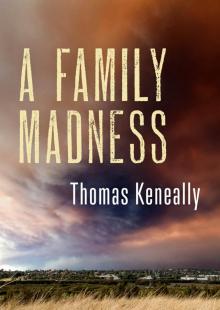 A Family Madness
A Family Madness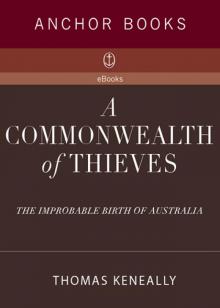 A Commonwealth of Thieves
A Commonwealth of Thieves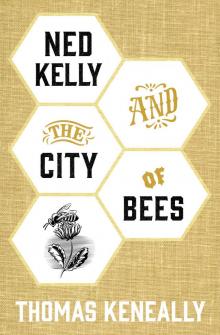 Ned Kelly and the City of Bees
Ned Kelly and the City of Bees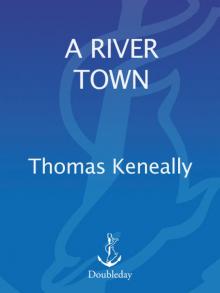 A River Town
A River Town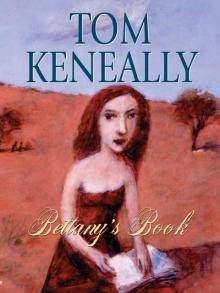 Bettany's Book
Bettany's Book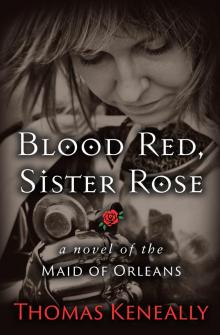 Blood Red, Sister Rose: A Novel of the Maid of Orleans
Blood Red, Sister Rose: A Novel of the Maid of Orleans Victim of the Aurora
Victim of the Aurora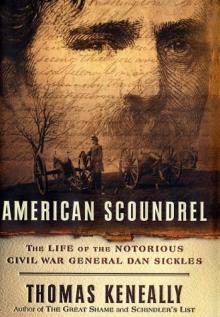 American Scoundrel American Scoundrel American Scoundrel
American Scoundrel American Scoundrel American Scoundrel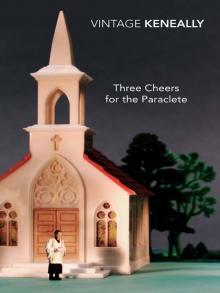 Three Cheers for the Paraclete
Three Cheers for the Paraclete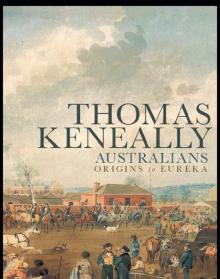 Australians: Origins to Eureka: 1
Australians: Origins to Eureka: 1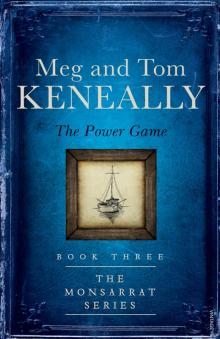 The Power Game
The Power Game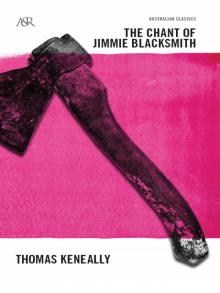 The Chant Of Jimmie Blacksmith
The Chant Of Jimmie Blacksmith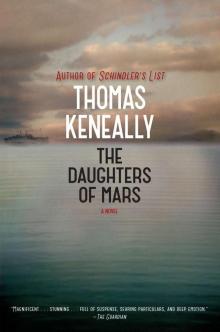 The Daughters of Mars
The Daughters of Mars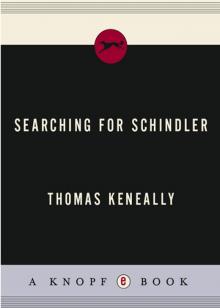 Searching for Schindler
Searching for Schindler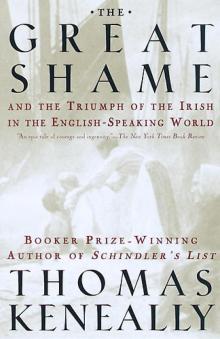 The Great Shame: And the Triumph of the Irish in the English-Speaking World
The Great Shame: And the Triumph of the Irish in the English-Speaking World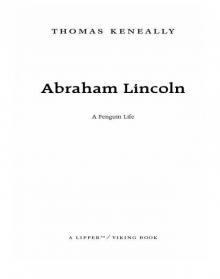 Abraham Lincoln
Abraham Lincoln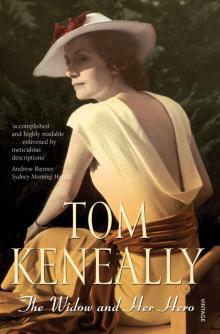 The Widow and Her Hero
The Widow and Her Hero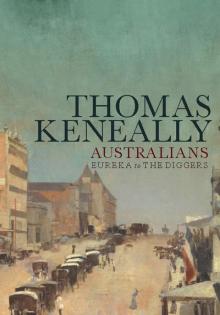 Eureka to the Diggers
Eureka to the Diggers Shame and the Captives
Shame and the Captives The Survivor
The Survivor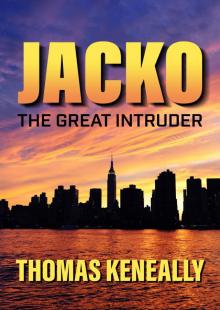 Jacko: The Great Intruder
Jacko: The Great Intruder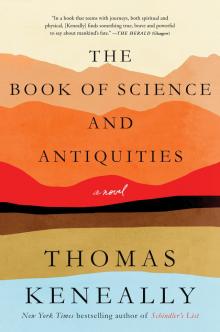 The Book of Science and Antiquities
The Book of Science and Antiquities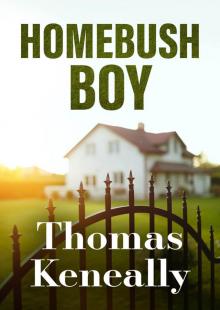 Homebush Boy
Homebush Boy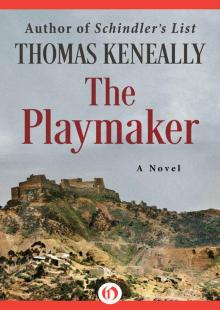 The Playmaker
The Playmaker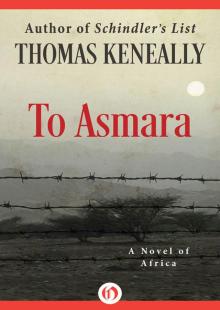 To Asmara: A Novel of Africa
To Asmara: A Novel of Africa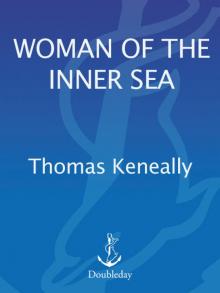 A Woman of the Inner Sea
A Woman of the Inner Sea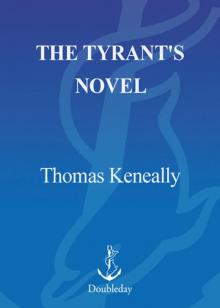 The Tyrant's Novel
The Tyrant's Novel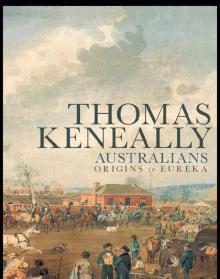 Australians
Australians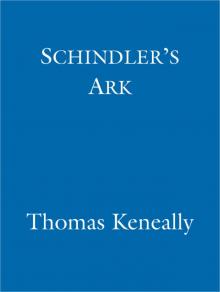 Schindler's Ark
Schindler's Ark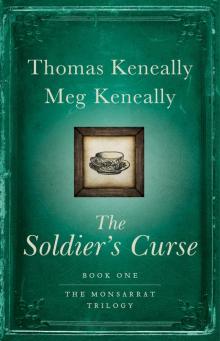 The Soldier's Curse
The Soldier's Curse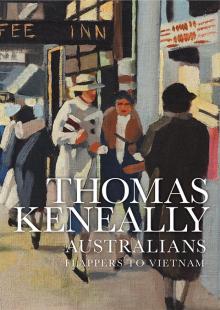 Australians, Volume 3
Australians, Volume 3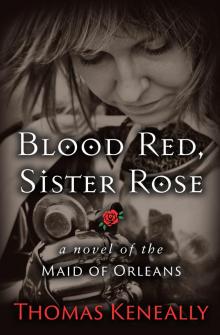 Blood Red, Sister Rose
Blood Red, Sister Rose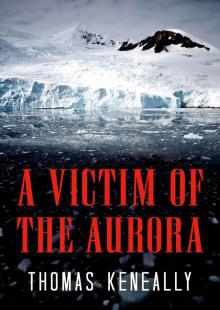 A Victim of the Aurora
A Victim of the Aurora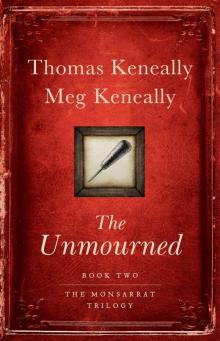 The Unmourned
The Unmourned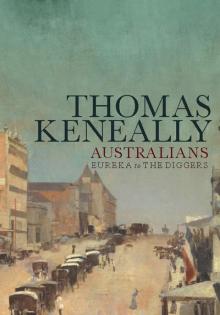 Australians, Volume 2
Australians, Volume 2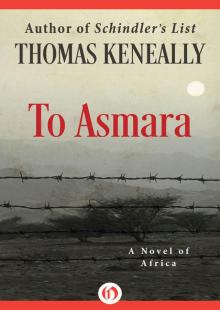 To Asmara
To Asmara